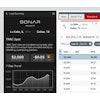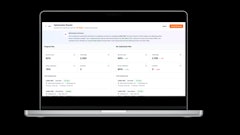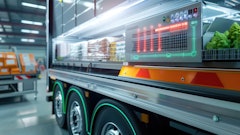
Success in the food service logistics industry ultimately lies in serving the needs of customers through efficient delivery. Doing that better--and at a lower price--differentiates logistics providers in a highly competitive industry.
It’s no surprise, then, that Big Data projects would be abuzz inside logistics provider boardrooms. Using data analytics to gain operational insights, improve transportation efficiency and cut costs to better manage the overall supply chain drives internal benefits, but it also increases value for the end customer.
The unique challenge facing food logistics providers is the nature of the cargo. With perishable items often onboard, it’s even more important for shipments to be on time. The less they’re on a truck, the more time grocers or restaurants have to sell them.
Organizations must maintain a real-time view of the holistic supply chain that connects restaurants with the entire logistics ecosystem. But that’s no easy task when you consider all of the information passing among geo-distributed people and systems, including purchase orders, invoices, route maps, truck logs, sensor data and financial information.
Follow the Data
Capturing the entire journey of food items, via a data trail from farm-to-table, leads to a broader understanding of an organization’s strengths and weaknesses. Smart, well-integrated Big Data initiatives provide empirical evidence to:
- Optimize transportation routes,
- Reduce inventory,
- Reduce freight and fuel costs,
- Maximize trailer utilization and mobilization,
- Reduce emissions, and
- Gain visibility into buying habits
And while the power of Big Data immediately helps a company’s own food logistics business, customers (and their customers’ customers) also benefit as restaurants implement more flexible replenishment schedules, experience fewer stock-outs and waste less food.
But accumulating useful data is not the problem, as most systems and devices currently in use generate plenty of digital data that can be stored relatively cheaply. The issue is seamlessly aggregating all of that data into a data lake and piping it into an analytics platform for operationalization.
To operationalize Big Data means the information generated from multiple disparate sources must be first integrated for accurate analysis and then acted upon to drive business outcomes. These sources include local and regional ERP systems and back-end production systems as well as warehouse and transportation management systems. But there’s a wealth of unstructured data from weather stations, GPS technology, smartphones, sensors, and even RFID tags, that also must be accounted for.
Connecting with Technology
In a complicated supply chain that connects farms, processors, suppliers, vendors and restaurants throughout the world using various devices and systems, how does a foodservice logistics provider make doing business with them easier?
The answer: Be the reliable service provider they can count on so restaurants and retailers can focus on their own food delivery business. Today’s savviest restaurateurs opt for a managed supply chain that levers a robust managed file transfer (MFT) and business to business (B2B) integration platform to:
- Increase visibility with a unified platform that delivers advanced data tracing from a central dashboard, complete with real-time alerts.
- Mitigate risk using highly available secure MFT technology with no single point of failure.
- Standardize onboarding by supporting the most advanced protocols to quickly say yes to new business.
- Automate workflows and maintain data quality via “any-to-any” data transformation for improved fulfillment.
Embracing a B2B integration platform to securely connect all data endpoints positions food logistics companies to optimize the supply chain and deliver a superior experience for their customers.
Big Data gets Results
Logistics are a cost food companies seemingly can control, so it’s not surprising to see a data gold rush for providers looking to stand out in the industry. In fact, leading foodservice logistics companies find that integrating their data flows rewards them with a valuable business advantage.
“Big Data presents a great opportunity to improve food logistics operations and in turn, the customer experience, especially in an industry where a high-functioning, optimized supply chain can be a huge competitive advantage,” says Brian Dreger, vice president of information technology infrastructure and data management for ArrowStream Omc/, an SaaS solution provider for the supply chain. “Our business is so customer-focused, and a highly connected, integrated data ecosystem helps us understand their needs and deliver the most efficient transportation and replenishment services for our customers.”
Whether it’s a tweet about a washed-out roadway, several weather forecasts that could affect crop production, or hundreds of verifiable RFID scans to ensure farm-to-fork restaurants understand the lifecycle of their products, the foodservice supply chain runs on data. Integrating and acting upon that information using highly reliable MFT and integration technology produces a repeatable optimization process that continuously elevates customer service.



















